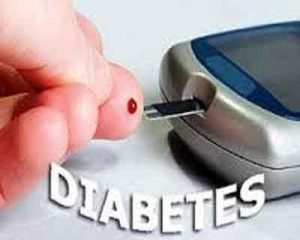- Home
- Editorial
- News
- Practice Guidelines
- Anesthesiology Guidelines
- Cancer Guidelines
- Cardiac Sciences Guidelines
- Critical Care Guidelines
- Dentistry Guidelines
- Dermatology Guidelines
- Diabetes and Endo Guidelines
- Diagnostics Guidelines
- ENT Guidelines
- Featured Practice Guidelines
- Gastroenterology Guidelines
- Geriatrics Guidelines
- Medicine Guidelines
- Nephrology Guidelines
- Neurosciences Guidelines
- Obs and Gynae Guidelines
- Ophthalmology Guidelines
- Orthopaedics Guidelines
- Paediatrics Guidelines
- Psychiatry Guidelines
- Pulmonology Guidelines
- Radiology Guidelines
- Surgery Guidelines
- Urology Guidelines
Glycemic control targets in Diabetes in children : ISPAD Guideline

What should be Glycemic control targets for diabetes in children, adolescents and young adults is an intriguing question.
For further reference log on to https://doi.org/10.1111/pedi.12737
The International Society for Pediatric and Adolescent Diabetes (ISPAD) has released clinical practice consensus guidelines on glycemic control targets and glucose monitoring in children, adolescents, and young adults with diabetes. The guidelines are published in the journal Pediatric Diabetes.
Assessment of Glycemic Control
- Glycemic control of children and adolescents must be assessed by both quarterly hemoglobin A1c (HbA1c) measurements and by regular home glucose monitoring. These permit the achievement of optimal health in the following ways:
- By determining with accuracy and precision an individual's glycemic control, including through assessment of each individual's glycemic determinants
- By reducing the risks of acute and chronic disease complications
- By minimizing the effects of hypoglycemia and hyperglycemia on brain development, cognitive function, and mood
Self-Monitoring of Glucose
- Regular self-monitoring of glucose (using accurate finger-stick blood glucose [BG] measurements, with or without continuous glucose monitoring [CGM] or intermittently scanned CGM [isCGM]), is essential for diabetes management for all children and adolescents with diabetes.
- Each child should have access to technology and materials for self-monitoring of glucose measurements to provide for enough testing for optimized diabetes care.
- When finger-stick BG measurements are used, testing may need to be performed 6-10 times per day to optimize intensive control. Regular review of these BG values should be performed with adjustments to medication/nutritional therapies to optimize control.
- Real-time CGM data particularly benefit children who cannot articulate symptoms of hypoglycemia or hyperglycemia and those with hypoglycemic unawareness.
- Intermittently scanned CGM can complement finger-stick BG assessments. Although isCGM provides some benefits similar to those of CGM, it does not alert users to hypoglycemia or hyperglycemia in real time, nor does it permit calibration. Without robust pediatric use efficacy data, it cannot fully replace BG monitoring.
HbA1c Targets and Measurements
- For children, adolescents, and young adults aged 25 years or younger, ISPAD recommends individualized targets, aiming for the lowest achievable HbA1c without undue exposure to severe hypoglycemia, balanced with quality of life and burden of care.
- For children, adolescents, and young adults aged 25 years or younger who have access to comprehensive care, a target HbA1c of less than 53 mmol/mol (7.0%) is recommended.
- A higher HbA1c goal (in most cases below 58 mmol/mol [7.5%]) is appropriate in the following contexts:
- Inability to articulate symptoms of hypoglycemia
- Hypoglycemia unawareness/history of severe hypoglycemia
- Lack of access to analog insulins, advanced insulin delivery technology, and CGM, and lack of ability to regularly check BG
- Individuals who are "high glycators," in whom an at-target HbA1c would reflect a significantly lower mean glucose level than 8.6 mmoL/L (155 mg/dL)
- A lower goal (6.5%) or 47.5 mmol/mol may be appropriate if achievable without excessive hypoglycemia, impairment of quality of life, and undue burden of care
- A lower goal may be appropriate during the honeymoon phase of type 1 diabetes.
- For patients who have elevated HbA1c, a stepwise approach to improve glycemic control is advised, including individualized attention to the following:
- Dose adjustments
- Personal factors limiting the achievement of the target
- Assessment of the psychological effect of goal setting on the individual
- Incorporation of available technology to improve glucose monitoring and insulin delivery modalities
- HbA1c measurement should be available in all centers caring for persons with diabetes.
- HbA1c measurements should be performed at least every 3 months.
- Examining variations in HbA1c between centers can assist in evaluating the care provided by health-care centers, including compliance with agreed-to standards to improve therapies and delivery of pediatric diabetes care.
For further reference log on to https://doi.org/10.1111/pedi.12737
childrencontinuouscontroldeliverydiabetesglucoseglycemicguidelinesHbA1cinsulinmonitorigmonitoringPediatric Diabetes
Source : With inputs from Pediatric�DiabetesNext Story
NO DATA FOUND

Disclaimer: This site is primarily intended for healthcare professionals. Any content/information on this website does not replace the advice of medical and/or health professionals and should not be construed as medical/diagnostic advice/endorsement or prescription. Use of this site is subject to our terms of use, privacy policy, advertisement policy. © 2020 Minerva Medical Treatment Pvt Ltd